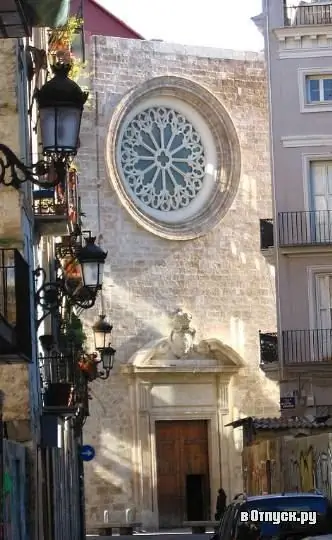
Description of the attraction
The Church of Santa Catalina is located in Valencia on the Lope de Vega square, a hundred meters from the Cathedral. This church was built on the site of a former mosque in 1245. The church was originally built in the Mediterranean Gothic style. In 1548, a massive fire broke out, completely destroying the central altar of the temple and causing significant damage to the chapels and the facade of the building. After that, the building of the temple was partially changed. Its façade was rebuilt in the Renaissance style. On October 5, the construction of the bell tower began, which was completed by 1705. The name of the author of the project, the architect Juan Batista Vignes, is engraved on the plaque at the foot of the bell tower. The bell tower, made in the Baroque style, has a hexagonal shape and consists of five tiers. It is one of the most original pieces of architecture in the Spanish Baroque. Its walls are decorated with magnificent bas-reliefs, and in the corners of the upper tier of the tower there are columns with a spiral trunk. The tower is crowned with a chapel decorated with a tiled dome.
The Church of St. Catalina has three entrances. The first, the main entrance, made in the Baroque style, overlooks the Lope de Vega square, and the other two - on the Tapineria street and the Santa Catalina street.
In 1785, the interior of the church was rebuilt in the Baroque style.
Unfortunately, the church was again damaged by fire during the Spanish Civil War. In the 50-60s of the 20th century, under the leadership of the architect Luis Guy Ramos, its reconstruction was carried out. Ramos carried out strengthening works and completed the vaults of the church. It is in this form that the Church of Santa Catalina appears before us today.






